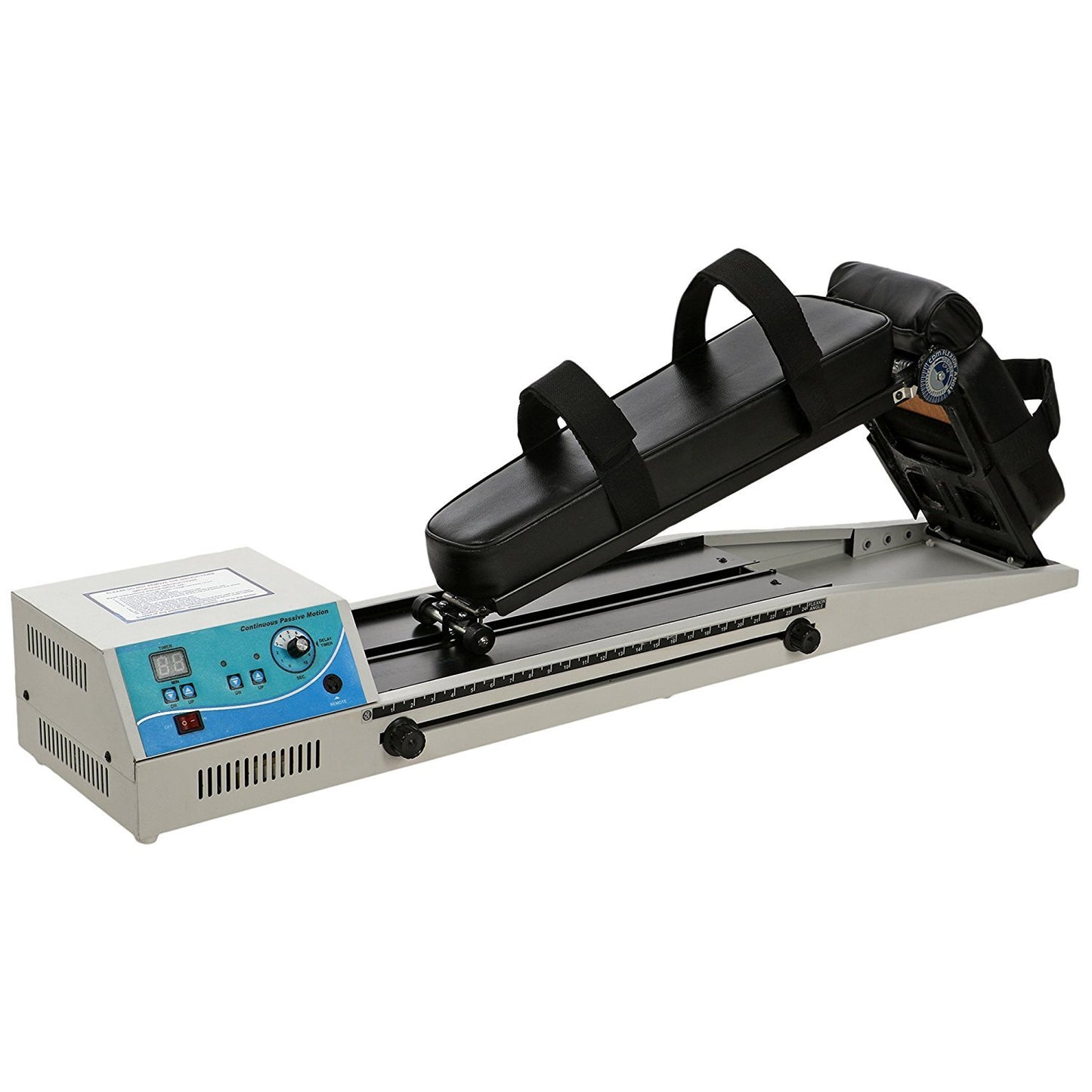Physiowell
Continuous Passive Motion Machine
Continuous Passive Motion Machine
Couldn't load pickup availability

PHYSIOWELL CPM
A continuous passive motion machine (also known as a CPM machine) is a motorized device used in physical therapy that gently bends a joint back and forth to aid with recovery following a joint injury or surgery. It is typically designed for the knee, but there are also CPM machines for joints like the hip or shoulder. The therapy is called passive because you let the machine do the work. The purpose of CPM is to restore the range of motion of a joint to its pre-treatment level and prevent scarring that can result in a loss of joint mobility.
What Does a CPM Machine Do?
A CPM machine is used during the first phase of rehabilitation following joint injury or surgery. The motorized device continually moves a joint through a controlled range of motion. The levels can be increased over time as recovery progresses.
The purpose of CPM therapy is to control post-operative pain, reduce inflammation, improve the range of motion, and ensure that the joint heals properly without scarring or adhesions (the sticking together of tissues).
There are different CPM machines used for people who have undergone or experienced:
- Adhesive capsulitis (frozen shoulder)
- Anterior cruciate ligament (ACL) repair
- Elbow surgery
- Hip replacement surgery
- Knee arthroplasty (knee replacement)
- Knee cartilage repair surgery
- Osteosarcoma resection
- Stroke
CPM may also reduce the risk of a potentially dangerous condition called deep venous thrombosis (DVT) following knee surgery.

PHYSIOWELL CPM
A CPM machine is a piece of equipment that a person may use to help with recovery after undergoing joint surgery. The idea behind CPM machines is that they increase range of motion. They provide sessions of continuous motion for joints that a person is unable to move freely. People may experience pain when trying to move their joint after undergoing surgery. This can cause them to avoid moving the joint, which can result in stiffness, a loss of motion, and the development of scar tissue.
CPM machine for after knee surgery, including total knee replacement :-
CPM machine for your hip :-
CPM machines may also be prescribed after hip surgery. A 2017 study found that use of CPM after arthroscopic surgery to correct hip impingement was associated with improved hip flexion post-surgery.
CPM machine for your shoulder :-
Your healthcare provider may recommend CPM after shoulder surgery in some cases.
A 2016 study Trusted Source compared the benefits of CPM and physiotherapy for people undergoing surgery for adhesive capsulitis, also known as frozen shoulder. The researchers found that both CPM and traditional physiotherapy led to improved recovery at 12 weeks. However, patients that used CPM had more distinct improvement in pain levels and function.

PHYSIOWELL CPM USAGE 1
A continuous passive motion (CPM) machine allows for movement of the joints after surgery. A person may use a CPM machine after undergoing surgery on joints such as the knee or hip.

PHYSIOWELL CPM USAGE 2
Continuous Passive Motion (CPM) therapy uses machines to move a joint passively i.e. without the patient exerting any effort. A motorized device moves the joint repetitively to a set of number of degrees and movement speed, determined by the physiotherapist.

PHYSIOWELL CPM USAGE 3
CPM machines move your joint without you having to move your muscles. It’s thought they help by counteracting the negative effects of prolonged immobilization.

PHYSIOWELL CPM USAGE 4
A CPM is an electronic machine that slowly helps your knee to bend following a total knee replacement. It is very important to get your knee to bend following this surgery, but sometimes due to stiffness you are unable to bend it yourself.

PHYSIOWELL CPM
People may use a CPM machine after undergoing surgery to increase a joint’s range of motion.
Some research suggests that a CPM machine could:
- reduce pain
- reduce the length of hospital stays
- reduce the need for manual movement of the joint while people are under anesthetics
A CPM machine provides regular joint movements without people needing to use their muscles. It can help bend a joint that may be stiff and difficult to move. A person can place the affected body part into the CPM machine and control the machine with a handheld control. For example, they can use the control to start and stop the motion, as well as adjust the levels of movement.

PHYSIOWELL CPM
CPM is a beautifully designed compact digital model used to treat joints of lower limb after an injury, disease or the following surgery. CPM offers improvement in fluid dynamics
The treatment method has been practiced for more than Thirty years. This unit is typically used postoperatively for total knee replacement and Anterior Cruciate Ligament repairs. Passive range of motion moves the joint gradually and slowly without the use of patient’s muscles.
Our Continuous Passive Motion Unit has following features
- Compact and elegant construction
- Electronic controls enable all adjustment of angle to be made on the front panel.
- Smooth and silent movement
- Digital Timer with Alarm
- Patient safety switch for stopping and reversing the motion
Uses :-
CPM is used for the treatment of intra-articular fractures, septic , ligaments tendon healing and also following total joint replacement to ensure a sufficient range of motion.
- To prevent stiffening, the joints have to be moved continuously which result in the following:
- Minimize the swelling and pain after operation
- Ensures faster recovery and shortened hospital stay
- Prevents extra-articular contractures and adhesions.
Share


